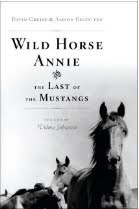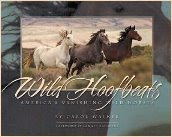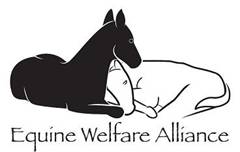
The Strategic Plan is filled with informative insight by some our Nation’s top experts including BLM, US Geological Survey (USGS), the Biological Resource Division (BRD) and the Animal Plant and Health Inspection Service (APHIS). Lots of long titles, I know, all designed to impress the reader with the weight and authority of their statements.
The plan was developed over a period of 9 months with the input of 39 subject area experts from 11 universities, 3 federal agencies (BLM, USGS-BRD, APHIS), and two state wildlife agencies as well as the Wild Horse & Burro Advisory Board, 5 expert committees in 2001, input from BLM managers and specialists assigned to the Wild Horse and Burro Program, periodic milestone decisions by the BLM, upon the research findings and direction, and earlier review of BLM and BRD research (Smith et al. 1996; Gross et al. 1999; Burnham et al. 1999; Population Viability Forum 1999; National Research Council 1991). It was upon this foundation that the strategic plan was built.
Yet from the looks of it, most involved were on the government payroll, whether through University grants, careers in the Department of the Interior, appointed government approved committees or state wildlife agencies. No wild horse and burro advocates were invited with the exception of the current reigning queen of the National Wild Horse and Burro Advisory Board, Robin Lohnes who has been doing a fine, fine job for America's wild horses and burros.
It was also interesting to note that in all their references, studies, and “expert committees” used for guidance, the Government Accountability Report that found BLM managers were catering to livestock interests at the expense of the horses and the law was never considered as they revved up “strategic plans” to keep the populations from reproducing.
Nor were there any discussions about how wild horse and burro population targets have been set, many as old as dirt and NEVER revisited, or how the overpopulation of horses and burros is a result of decisions based on financial or political pressures that established these arbitrary numbers to appease those interests.
Nor is it discussed that maybe, just maybe, if these government agencies weren’t so busy managing the natural world to death, they wouldn’t have to devise a “Strategic Plan” to control their meddling (even sounds like a war program, doesn’t it?)
In assessing the situation, experts stated, “Wild horses and burros have a considerable following in the American public who consider the animals to be part of their western heritage and aesthetic enjoyment of the federal lands. A number of advocacy groups maintain that wild horses and burros should receive the first preference in any conflicts with other resource uses on lands where they are protected.”
Note the key words in there, on lands where they are protected! Despite having significantly less habitat than the 630 million acres wildlife has or only allowed on a fraction of the land that livestock is, wild horse and burro advocates actually want the wild horses and burros to be the first consideration on lands where they are protected.
Apparently this crazy idea only applies to any other species on their "protected habitat" but no worries, wild horses and burros aren’t even close to being placed as a priority and that is why the “excess” populations are so desperately in need of control!
The report goes on, stating, “Several strong and diverse public interest groups pressure the U.S. Department of the Interior regarding the management of wild horses on public lands. These interests include, at one extreme, those who strongly support the protection and management of wild horses with little or no human intervention. At the other end of the spectrum are those who favor intense management of wild horses and burros, with an objective to maintain very low numbers of horses and burros. Elements of the public, such as those that pursue domestic livestock grazing and the harvest of big game wildlife, may view wild horses and burros as some competitors for other resource uses.”
Extreme, huh? Do we geld bighorn sheep? Do we brand sage grouse? Do we inject PZP into pygmy rabbits? Aren’t these species pretty much left alone to be wildlife? How is asking wild horses and burros be treated like any other wildlife species extreme?
Then the Management Challenge section goes on to state, “Survival rates for wild horses on western public lands are high. None of the significant natural predators from native ranges of the wild horse in Europe and Asia — wolves, brown bears, and possibly one or more of the larger cat species — exist on the wild horse ranges in the western United States (mountain lions and black bears take foals in a few herds, but predation contributes to population limitation in only a handful of herds (e.g., Montgomery Pass). In some cases, adult annual survival rates exceed 95% and many horse herds grow at sustained high rates of 15-22% per year.”
First notice that their "native ranges" are now Europe and Asia, not North America commonly refered to as the "Cradle of Equine Evolution" by equine experts NOT involved in these strategic plans.
Second, notice that sustained high rates is defined as 15-22% per year. Yet, in BLMs recent assessments on wild horse and burro removals and the need to control them, figures are now being thrown out as high as 30-32% - with fertility control! And since BLM can’t seem to figure out most of the time if 100 or 1,000 wild horses are on the range, how would they know what the fertility rates are anyway?
Love the predator line too. Someone has recently corrected me on my last post about “hundreds of predators are killed each year” as the real statistics look something like this;
In 2006, Wildlife “Services” killed 1.6 million animals including coyotes, wolves, bobcats, cougars, badgers and bears, down from the 2.7 million killed in 2004. They spend over $100 million dollars a year to bring down “undesirable” wildlife species, which just happens to include all those “no-natural predators” wild horses and burros “don’t have” that they find it necessary to spend millions more on round ups and strategic research projects for. (1)
Which, back to the subject at hand, is what the Plan is mostly about – experiments on wild horse and burro populations that include such choice items as the “hormonal sterilant” used on stallions that could enter the food chain (of no natural predators) and the silicone rod implants, also suspended because of “the invasive nature of the surgery and the unacceptable stress placed on mares.” Wonder what that really looked like?
To read or download your copy of
The Strategic Research Plan
Wild Horse and Burro Management
(1) Wildlife and predator statistics supplied by Wild Earth Guardians at http://www.wildearthguardians.org/

























 Is a new documentary by filmmaker James Kleinert of Moving Cloud Productions scheduled to screen on Wednesday, September 26, 2007 in the LBJ Room on Capitol Hill in Washington, D.C. for both Senators and Representatives.
Is a new documentary by filmmaker James Kleinert of Moving Cloud Productions scheduled to screen on Wednesday, September 26, 2007 in the LBJ Room on Capitol Hill in Washington, D.C. for both Senators and Representatives.






























